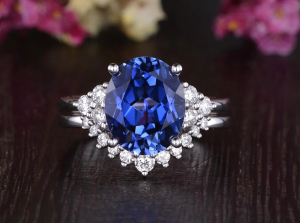The History of the Martini

The venerable Martini. Perhaps the most famous cocktail, and certainly the mixed drink with the most myths, stories and lore attached. It is also the one cocktail that has a following and its own brand of snobbery. You usually don’t here two people arguing over a Planters Punch.
The basic martini recipe is as simple as you can get. Traditionally, a Martini is made with gin and dry white vermouth, although, recently the Vodka Martini has become much more popular. The standard modern martini is a five parts gin or vodka to one part vermouth although few bartenders today would follow that model. The ingredients are shaken or stirred with ice, strained and served “straight up” without ice in a chilled cocktail glass, and garnished with an olive.
Martini purists are upset that vodka is now the liquor of choice when people order a martini. They insist it should be called a ‘Vodka Martini’ or if they are really picky a ‘Bradford.’
The amount of vermouth to be added is also a subject of great debate. The less vermouth, the drier the Martini. Today the most common was of mixing the vermouth is the coat the ice cubes in vermouth and then throw out the excess vermouth. Some progressive bars now use vermouth spritzers to coat the ice (thus saving a lot of vermouth).
Shaken or stirred?
According to true Martini drinker, because vermouth mixes easily and uniformly with its solvent (gin or vodka), a martini should always be mixed in a stirring glass. For purists, shaking “bruises” the gin and also chips the ice watering down the Martini.
However, thanks to novel and movie spy James Bond, who ordered his Martinis “Shaken, not stirred,” the Martini is more often shaken these days.
Shaken aficionados say, as with scotch, a little water creates a more rounded taste. They also claim the shaking action adds oxygen to the drink and sharpens the taste and distributes the vermouth more evenly.
History
The generally accepted origin of the Martini begins in San Francisco in 1862. A cocktail named after nearby the town of Martinez was served at the Occidental Hotel. People drank at the hotel before taking the evening ferry to Martinez across the bay. The original cocktail consisted of two ounces of Italian “Martini and Rosso” sweet vermouth, one ounce Old Tom sweet gin, two dashes maraschino cherry liquid, one dash bitters, shaken, and served with a twist of lemon. By the end of the 19th century the Martini, had morphed into a simpler form. Two dashes of Orange bitters were mixed with half a jigger of dry French vermouth, and half a jigger of dry English gin, stirred and served with an olive.
But it was Prohibition and the relative ease of illegal gin manufacture that led to the Martini’s rise as the predominant cocktail of the mid 20th century.
With the repeal of Prohibition, and the ready availability of quality gin, the drink became progressively dryer, with less vermouth being added.
The first reference to vodka being used in a Martini was in the 1950s but it was the James Bond novels by Ian Fleming and subsequent films that raised the profile of the vodka martini in the 1960s. In the novel Casino Royale, Bond’s recipe for his “vespa martini” was three parts Gordon’s gin, one part Russian vodka, a half measure of Kina Lillet aperitif, shaken until ice-cold, served with a slice of lemon. By the second Bond novel, Live and Let Die, Bond was drinking conventional vodka Martinis.
In the seventies and eighties the martini was seen as old fashioned and was replaced by more intricate cocktails and wine spritzers. But the mid 1990s saw a resurgence in the drink and an explosion of new versions. These new specialty martinis can be made with combinations of fresh fruit juices, splashes of cream, and brightly colored liqueurs.
Instead of the traditional olive, cocktail onion, or lemon twist, new garnishes such as marinated capers, fresh herbs, coffee beans or sun-dried tomatoes are being used.
Today, the Martini in all its versions has returned to its position as the world’s preeminent cocktail.
Folklore
The Martini comes with its own folklore and many past martini drinker have their own recipes for coming up with the perfect or the driest Martini. The quest for dryness has taken on bizarre proportions.
Winston Churchill’s recipe called for pouring gin into a glass and then simply bowing in the direction of France. Alfred Hitchcock’s recipe called for five parts gin and a quick glance at a bottle of vermouth. Ernest Hemingway liked to order a “Montgomery”, which was a martini mixed at a gin:vermouth ratio of 15:1 the odds at which, allegedly, Field Marshall Montgomery would want before going into battle.
In the 1958 movie Teacher’s Pet, Clark Gable mixes a martini by turning the bottle of vermouth upside-down and then running the moistened cork around the rim of the glass before filling it with gin
The classic seventies TV show MASH took a satirical swipe at this dryness fetish. ‘Hawkeye’ working on his still says to his fellow military doctors “I’m pursuing my lifelong quest for the perfect, the absolutely driest martini to be found in this or any other world. And I think I may have hit upon the perfect formula…You pour six jiggers of gin, and you drink it while staring at a picture of Lorenzo Schwartz, (the inventor of vermouth.)”






